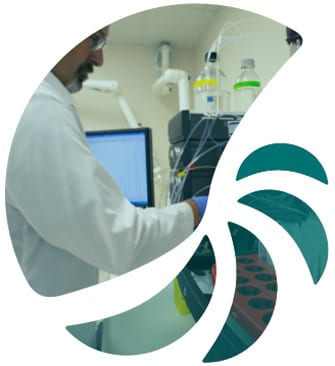LPS:
Ultrapure-grade LPS prepared from Escherichia coli 0111:B4 (List Biologicals, Campbell, CA) was reconstituted in sterile saline at 10g/ml and stored in aliquots at 20C until use in experiments. The specific bioactivity for the individual lot (4216A2) used for this work was not available, but the predicted activity provided by the vendor based on a similar lot was 6.75106 EU/mg (communication from List Biologicals).
In vitro LPS challenge:
Whole blood was collected from animals into sodium heparin tubes (Beckton Dickinson, Caanan, CT) to prevent coagulation. Aliquots (200l) of each blood sample were dispensed into 96-well polypropylene plates and placed at 37C and 5% CO2 for 30min. LPS diluted in sterile saline or saline only (control) was added to sample wells (10l volume) to achieve final LPS concentrations ranging from 0 to 10g/ml. The plates were incubated for an additional 5h at 37C and then centrifuged at 4C for 10min at 600g to pellet the cells. Plasma collected from each well was stored at 80C until analyzed. The concentration of TNF in each plasma sample was measured by ELISA using the Monkey TNF ELISA kit (U-CyTech, Utrecht, the Netherlands) according to manufacturer instructions. All samples were measured in duplicate.
In vivo LPS challenge and antibody-based modulation:
Animals (n=3/group) were injected IV with 1.0g LPS/kg in a volume of 0.1ml/kg. The LPS was first administered on three different days each separated by a 3-week rest period to establish baseline LPS responses. Prior to the third LPS challenge, blood samples were collected to perform the in vitro LPS challenge (described above) in order to compare in vitro cytokine responses to those induced in vivo. Following another 3-week rest period, animals were injected IV with 0.1, 1, or 10mg/kg of anti-IL-10R1 mAb or with 10mg/kg of the isotype control mAb 2h before a fourth LPS challenge was administered IV. An additional set of control animals was given 10mg/kg anti-IL-10R1 mAb IV and left unchallenged (no LPS). After another 3-week rest period, a fifth and final LPS challenge was performed on all groups.
Blood samples were collected into serum separator tubes (Greiner Bio-One, Monroe, NC) just prior to and 1, 2, 4, 6, and 24h after each LPS challenge to measure concentrations of cytokines (all timepoints) and C-reactive protein (CRP) (pre-challenge and 24h post-challenge only). Blood samples were also collected just prior to and 0.25, 2, 7, 24, 30, 48, 72, 144, 240, 384, and 552h immediately after antibody administration to measure serum anti-IL10R mAb levels. Sera prepared from the blood samples by centrifugation were stored at 80C (for cytokine and CRP assays) or at 20C (for antibody assay) until thawed and analyzed.



